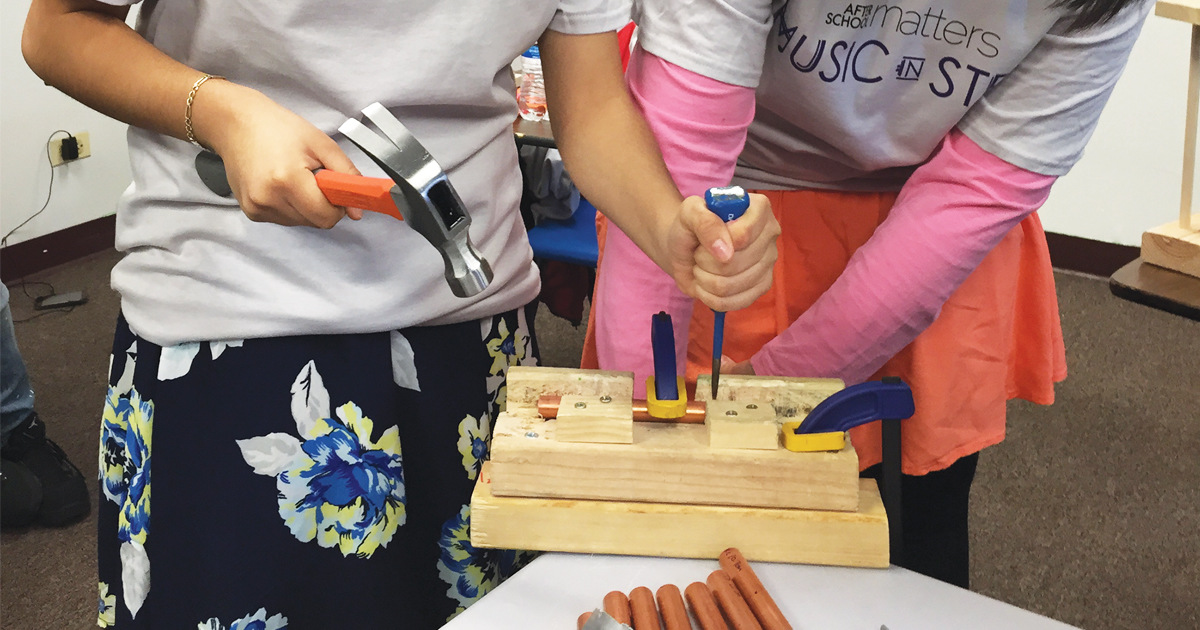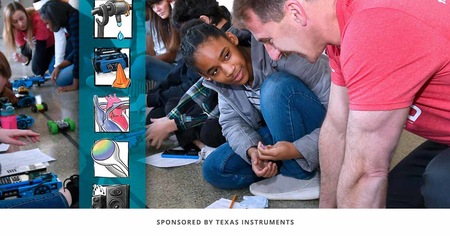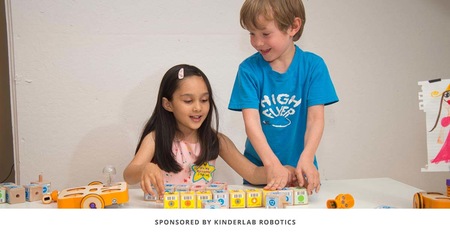Engineers, on the other hand, create things that have never existed before. Engineers apply their understanding of science and mathematics to design and create devices, structures and systems that improve our lives. Engineering teams follow the steps of the engineering design process: understand the need/problem, brainstorm different designs, select the best design, make a plan, create and test a prototype, and improve it until a satisfactory solution is achieved.
WHY TEACH ENGINEERING?
Engineering is an essential and fun part of STEM education. Watch any group of young people at play and it is easy to see that they are fascinated by building things and taking objects apart to see how things work. In other words, young people are natural-born engineers. Engineering is intrinsically motivational. Activities can be set around exciting project-based challenges that encourage discovery-based learning. These challenges can be a great gateway to teaching STEM for non-science professionals. While they do require careful and intentional group management to ensure that actual knowledge is built, engineering challenges are flexible and do not require a lot of in-depth technical knowledge to get started. In fact, setting challenges with a lack of preconceived answers can lead to some very inventive solutions. Engineering challenges are easy to implement and very self-driven with the right level of group management.
WHAT ARE THE BENEFITS TO TEACHING ENGINEERING?
Engineering enhances learning by having young people apply what they already know about science and math to new problems. By applying knowledge to real-world challenges, young people get to experience how math and science can be relevant to their lives. Engineering is science and math in action. As groups work together to answer questions—such as What is the best way straws can be joined together to make a tower? or What size rubber band do I need to make a catapult?—they are encouraged to use the full range of 21st-century skills. Engineering projects involve young people in design, visualization, collaboration, critical thinking, creativity, communication and teamwork. Research has shown that engineering helps build classroom equity. One great benefit to teaching engineering is there is no right answer. With failure just being another part of the problem-solving process, all young people can see themselves as successful.
HOW TO TEACH ENGINEERING
Engineering is best taught in small work groups that mirror the collaboration and division of labor that occurs in the real-world workplace. After dividing youth into groups, a challenge can be presented and young people can begin to apply the engineering design process:
- Identify and formulate a problem.
- Design a solution.
- Create and test a solution.
- Optimize and re-design.
- Communicate and share the solution.
Engineering problems can be abstract, like designing an alarm system to protect a pirate treasure or a spacecraft that can land on an alien planet. With abstract problems, the groups will design pen-and-paper solutions that can be presented and explained to class. Or problems can be more practical, involving designs that can actually be built from craft materials—such as designing a parachute and packaging to safely cradle a water balloon from a 10-foot drop, or building a bridge with straws that is capable of supporting a fixed weight.
Engineering challenges can be set for young people of all ages and designed to accommodate the knowledge and fine motor skills of the audience. For young people who cannot yet spell e-n-g-i-n-e-e-r-i-n-g, simple challenges can be made around their experiences. For example, the story of The Three Little Pigs can lead to a building challenge for a house that can withstand wind blown from a fan. For older young people, challenges can be set that involve more complex ideas, research, building and testing—for example, building a catapult that can launch a marshmallow the farthest or designing a rubber band-powered car that is able to race and stop the closest to a 20-foot finish line.
The goal is to set challenges that engage the group in solving a problem that meets their knowledge and fine motor skill level. Be hands-off in providing a solution, but hands-on in helping the groups formulate and test their questions and theories. It is important for groups to understand the processes they are learning, so they build knowledge and improve their problem-solving skills.
CAREER SUCCESS
When engineering is part of STEM instruction, young people become more aware of the diverse opportunities for engineering, science and technical careers. Success in these types of activities mean that they are more likely to see these careers as options they could choose. This is important at a time when the number of U.S. college students pursuing engineering education is decreasing. An early introduction to engineering can encourage all students, but especially girls and minorities, to consider engineering as a career and take the necessary science and math courses in high school.
TAKE THE PLUNGE
From bridges to sneakers, engineering is all around us. From healthcare to the environment, engineering is essential to our modern-day lives and ultimately the success of the United States on the world stage as a competitive economy. It is essential that our young people are exposed to its processes. Fortunately, engineering challenges can be some of the most successful and exciting STEM topics to teach. They are hands-on, experiential and—with the right management—allow children from all backgrounds, genders and ethnicities to experience success. Exploration and project-based learning is very motivational. With little prior knowledge, all types of educators can experience success in presenting engineering challenges in which their groups participate. Challenges can be attempted with both the young people and the teacher learning about the solution as they go. The focus for the facilitator should be good questioning and positive group management to ensure that all the young people in the group have an equal voice and participation in the project. With practice, engineering challenges can become second nature to a group with the young people off and running, excited to participate from start to finish.
In STEM, "E" is for exciting, engaging and engineering.
Contributed by Andy the Science Wiz, NAA's STEM Specialist, Andy Allan.
Photo courtesy of After School Matters.




